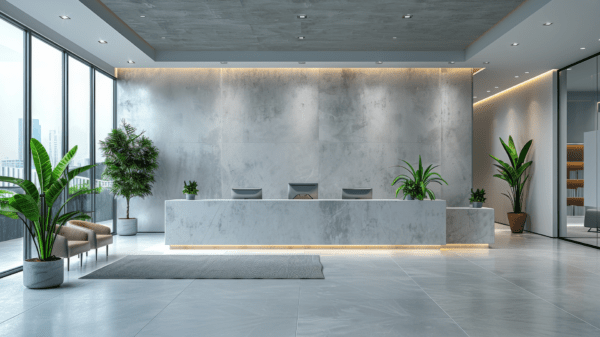Brightness in the workplace plays a crucial role in employee well-being and productivity. Indeed, the quality of lighting can have a significant impact on people’s health, comfort and performance. In this article, we explore the importance of brightness in professional environments, its effects on employees, and how to measure and optimize brightness with Nexelec’s brightness sensors.

Published on 11 June 2024
The importance of brightness in the workplace
In this article:
The impact of brightness on employees
Adequate brightness in workspaces is essential to maintain an optimum level of visual comfort. Insufficient light can lead to eyestrain, headaches and reduced concentration. Conversely, excessive light can create glare and distractions, also impairing productivity.
In addition, it has a direct impact on people’s circadian rhythm, regulating their biological clock and influencing their mood and energy levels throughout the day. Appropriate exposure to natural light during working hours can help improve mood, reduce stress and increase employee alertness.
Energy comfort and workspace efficiency
In addition to its influence on employee well-being, lighting also plays a crucial role in the energy efficiency of buildings. Efficient, well-designed lighting can reduce energy consumption, thus contributing to financial savings and a reduced environmental footprint.
Studies have shown that well-lit buildings equipped with intelligent lighting systems can not only improve the visual comfort of occupants, but also optimize the use of natural light, reducing reliance on artificial lighting during the day.
Measure and optimize luminosity with Nexelec sensors
To guarantee an optimal working environment, it’s essential to monitor and control the luminosity of professional spaces. Nexelec sensors offer an innovative solution for accurately measuring ambient brightness and adjusting lighting accordingly.
Thanks to their advanced technology, Nexelec brightness sensors can detect light levels in real time and provide valuable data on natural and artificial lighting in offices, meeting rooms and other workspaces.
By integrating Nexelec sensors into building lighting management systems, companies can optimize the use of natural light, reduce energy consumption and improve the visual comfort of employees, thus contributing to greater productivity and a more sustainable working environment.
Brightness in workspaces is an essential element of employee well-being and building energy efficiency. By understanding the impact of brightness on individuals and using innovative technologies such as Nexelec sensors, companies can create more comfortable, productive and sustainable working environments for their employees.